The Crucifixion Window
by B. van Cleve
The crucifixion Window can be found on the north side of the Lady Chapel.
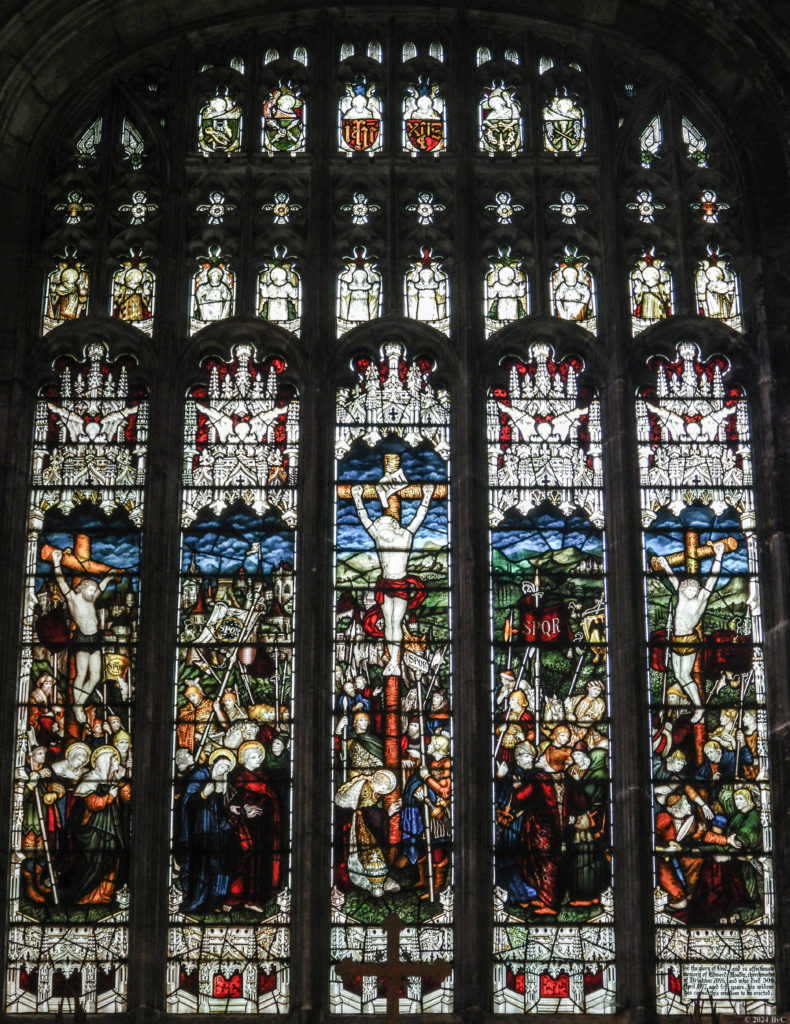
It shows both, the heavenly and the earthly realm of the crucifixion. The heavenly realm consists of two tiers of angels who preside over the scene on earth.
The Heavenly Realm

The six angels in the top row of crucifixion window hold up shields. The two in the middle have the ‘Christogram’ engraved on their shields. This is an abbreviation of the Greek name of Jesus Christ written in Latin letters. The one on the left spells ‘IHC’, the abbreviation for Jesus (ΙΗΣΟΥΣ), the one on the right ‘XPS’, the abbreviation for Christ (ΧΡΙΣΤΟΣ). The background colour of these two shields is red, in contrast to the other four shields, which have a green background.
The other four angels have symbols of the crucifixion engraved on their shields. From left to right we find hammer and tongs, bound to a ladder, which is sometimes said to symbolise the struggle with the devil. The next shield shows a spear and a sponge on a long stick. The first shield after the Christogram shows the crown of thorns, entwined with three nails. The last shield shows two scourges.
The Kempe logo can be seen in the row of artistic embellishments beneath the first row of angels. It is the single sheaf of wheat, and is situated in the left lower corner of the image above. ‘The Corpus of Kempe Stained Glass in the UK and Ireland’ states that this window was manufactured in 1898.
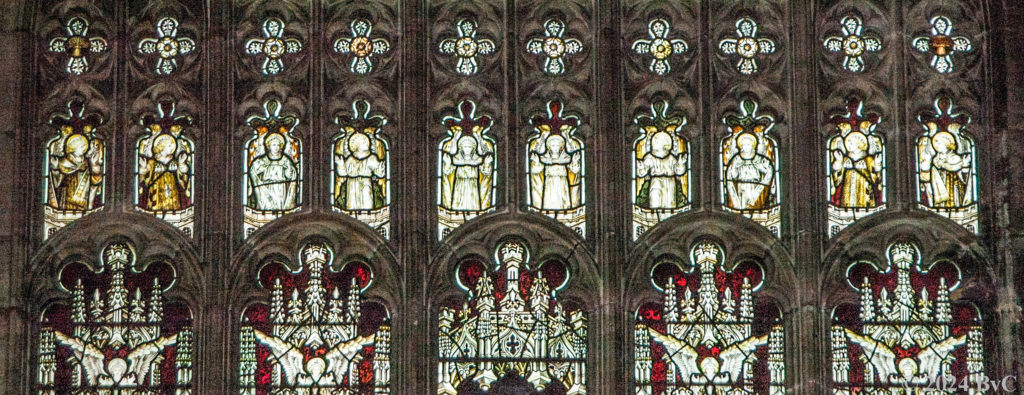
Below the row of embellishments another row of angels is depicted, this time ten in number, and below these another four angels on the border between heaven and earth. These angels don’t carry any banners with writing or any shields. They are probably just there to underline the heavenly presence, not normally perceived by mortals, but nevertheless a reality.
The Earthly Realm
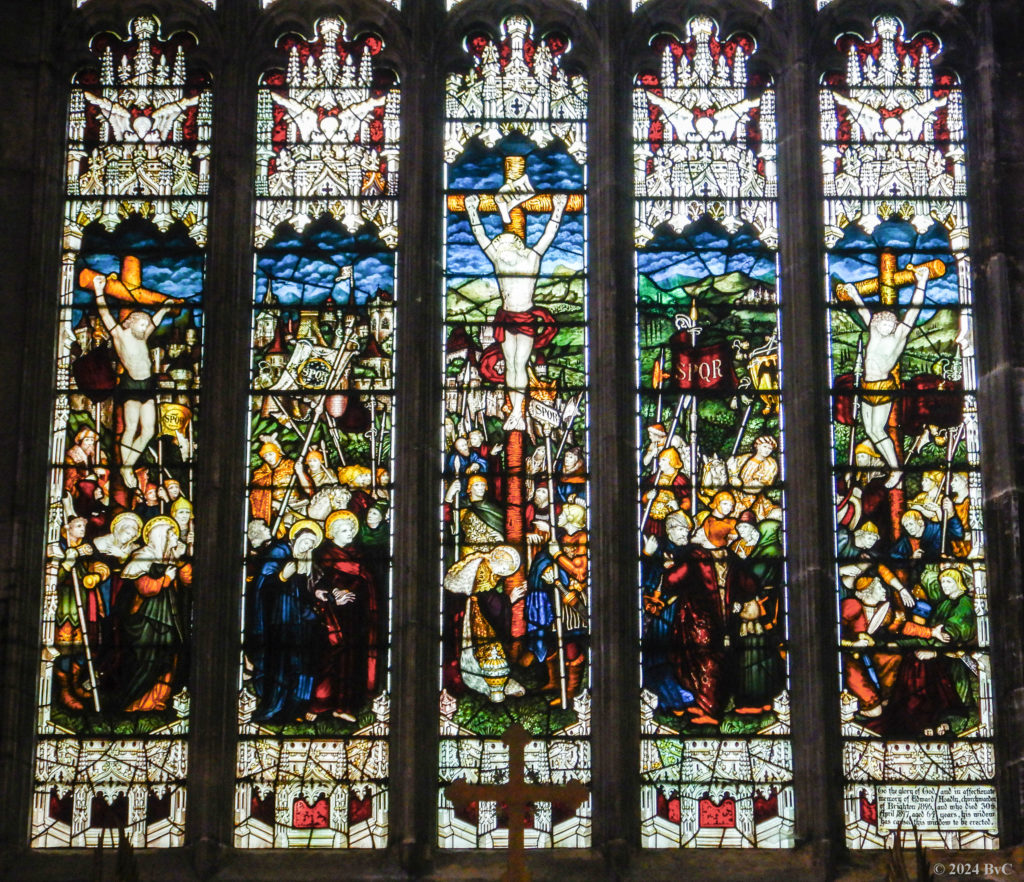
In the earthly realm the darkness reported in Luke 23 is indicated by thick grey clouds resting over the entire scene. Jesus, in the middle light, hanging on the cross, is already dead. He has the wound from the spear in his side. He has a very pale halo, but the ‘Fleurs de Lys’ are still visible. Behind him the sky is a little lighter than to the right and to the left.
The five lights depicting this scene can be divided into two groups. The three left lights show mainly figures having Jesus in their centre or mourning, the two right lights show figures not having Jesus in their focus.
The light furthest to the right shows one of the criminals looking away from Jesus. The four soldiers underneath him are busy dividing the clothes of the crucified between themselves, even the dice are visible on the ground. The next light to the left shows some Romans, one on horse, as if to try to keep the situation under control. The standards with ‘SPQR’ (‘Senatus Populusque Romanus’, ‘the Senate and the People of Rome’) are prominent, and they can be seen almost everywhere. In the foreground three men, who are not depicted as Romans, talk to each other, maybe about what is happening, but if they do, they seem to distance themselves.
In contrast to the figures in the two right lights, the figures in the three left lights are mostly depicted as having Jesus as their focus. The centurion under the cross looks up at Jesus, and so do the people in the background. A deeply moved woman with halo holds on to the cross. Next to her stands a vessel, which resembles an alabaster vial, maybe the one belonging to Mary Magdalene. This might be an attempt to make sure she is recognised. The next light to the left shows soldiers, one on horseback, who again seem to try to keep the situation under control. Some people look at Jesus, some don’t. In the foreground are a mourning woman with halo and a young man with halo. We are reminded by this scene that Jesus must have just told John to look after Mary. The next light shows the second criminal. He is not looking away, as the first criminal does, he is looking at Jesus. Beneath him are further Roman soldiers and two mourning women with halo. They are not identified any further, the halo is the only indication they are followers of Jesus.
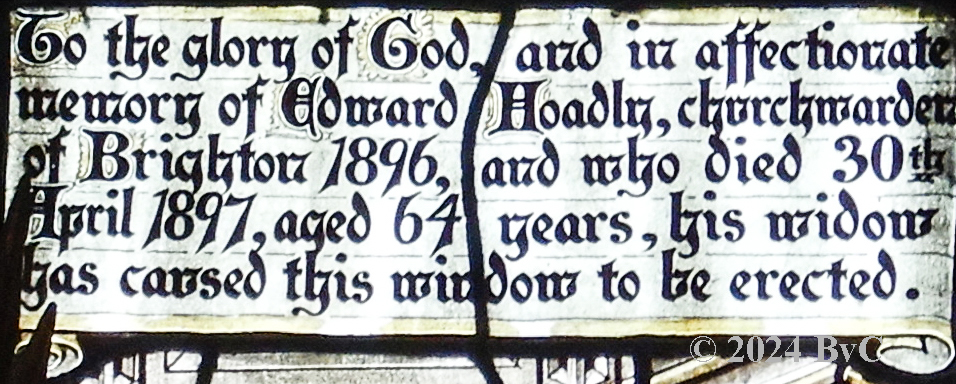
The dedicational text of the crucifixion window reads:
To the Glory of God and in affectionate
memory of Edward Hoadly, churchwarden
of Brighton 1896, and who died 30th
April 1897, aged 64 years, his widow
has caused this window to be erected.
All images © B. van Cleve
← previous window – next window →
Floor plan of stained glass windows in St. Peter’s church Brighton
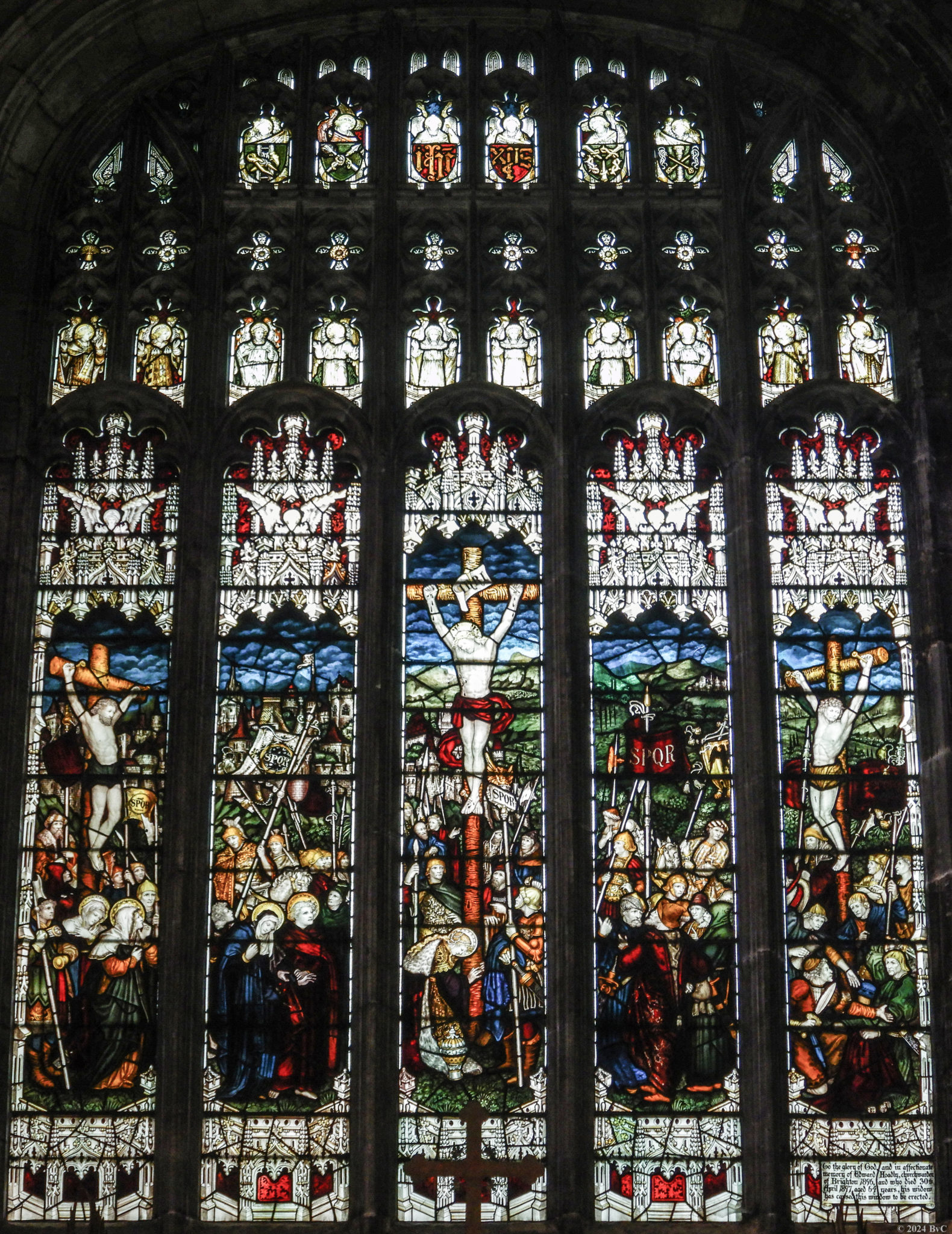
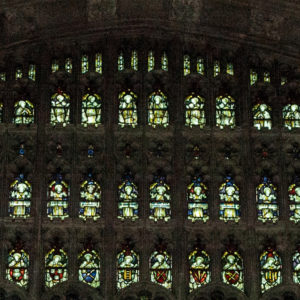
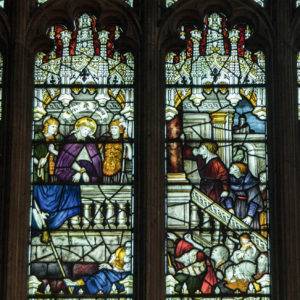
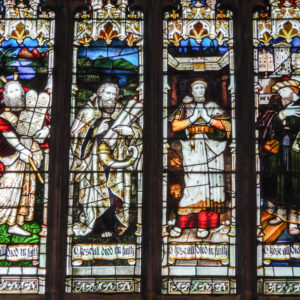
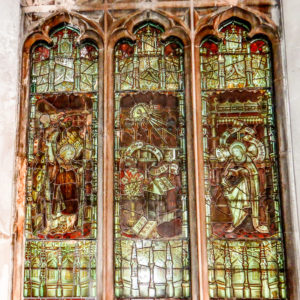
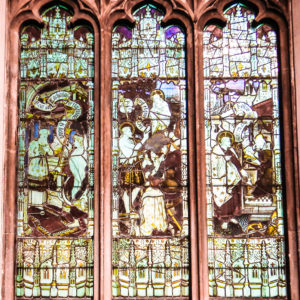
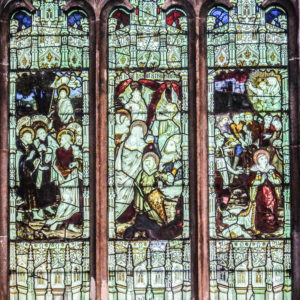
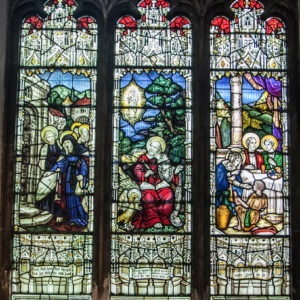
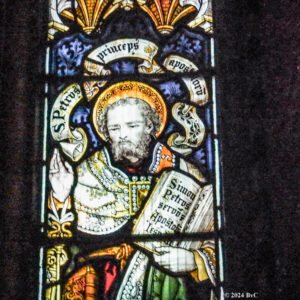
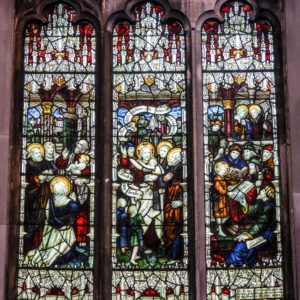
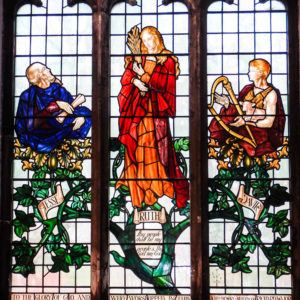
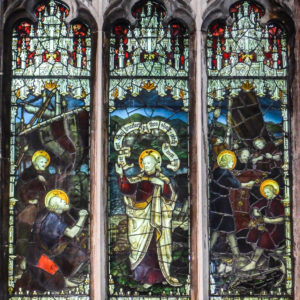
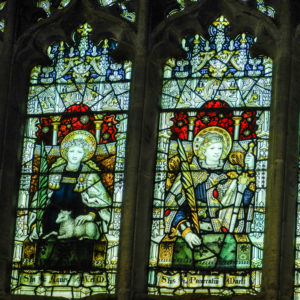
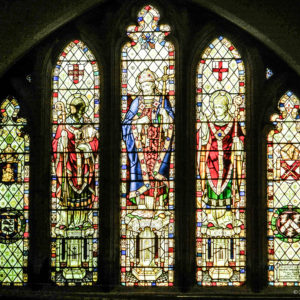
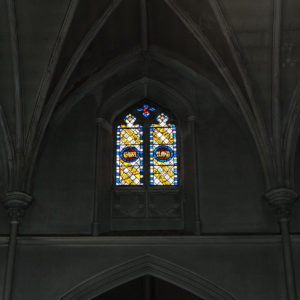
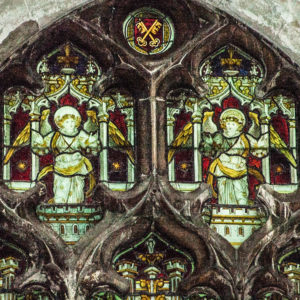
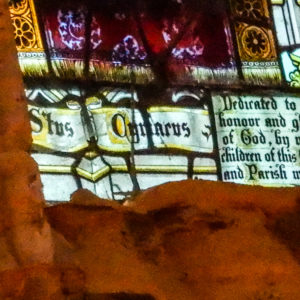
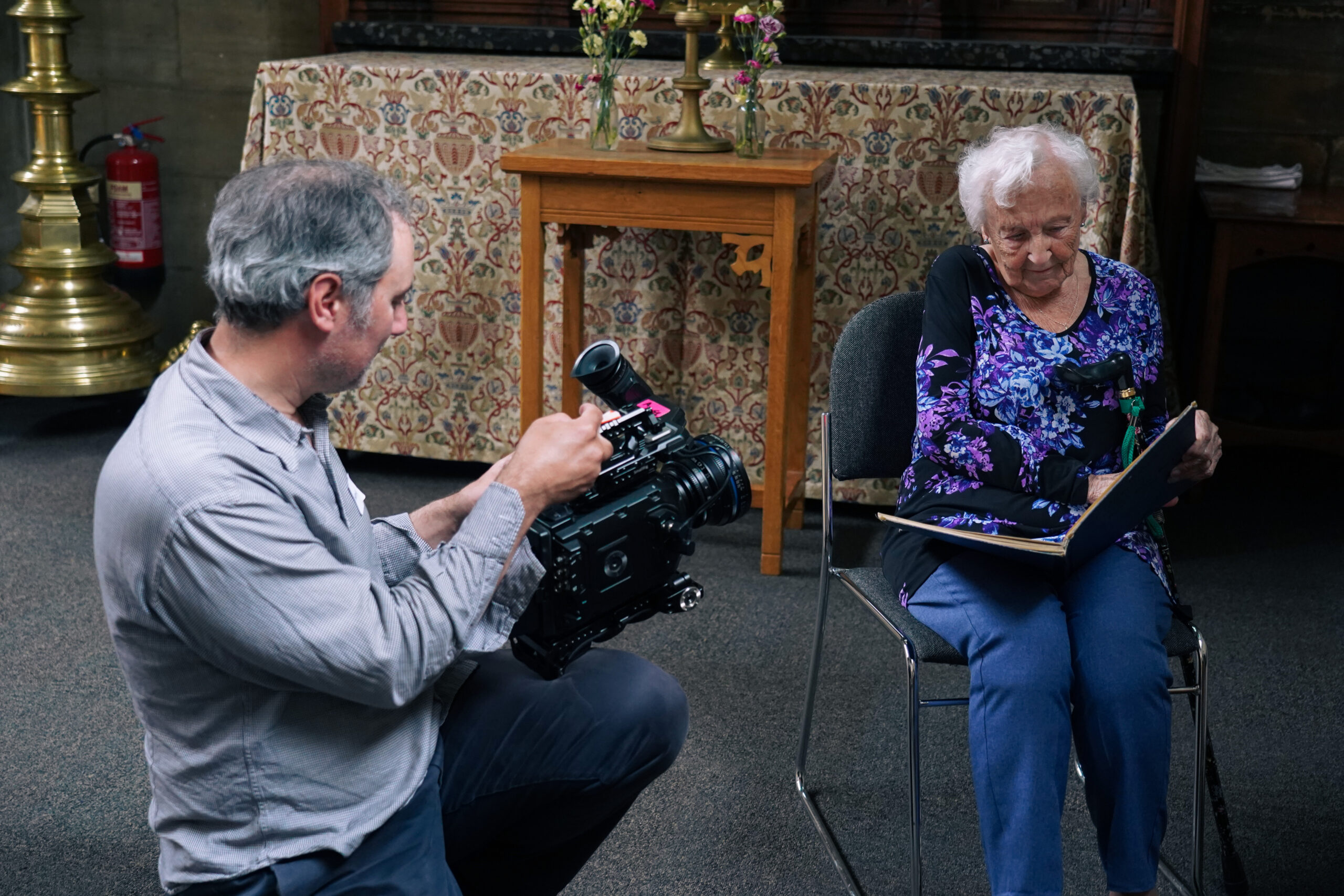



‘This project is kindly funded by Historic England as part of the Everyday Heritage - Working Class Histories. We are grateful to them for this funding.’